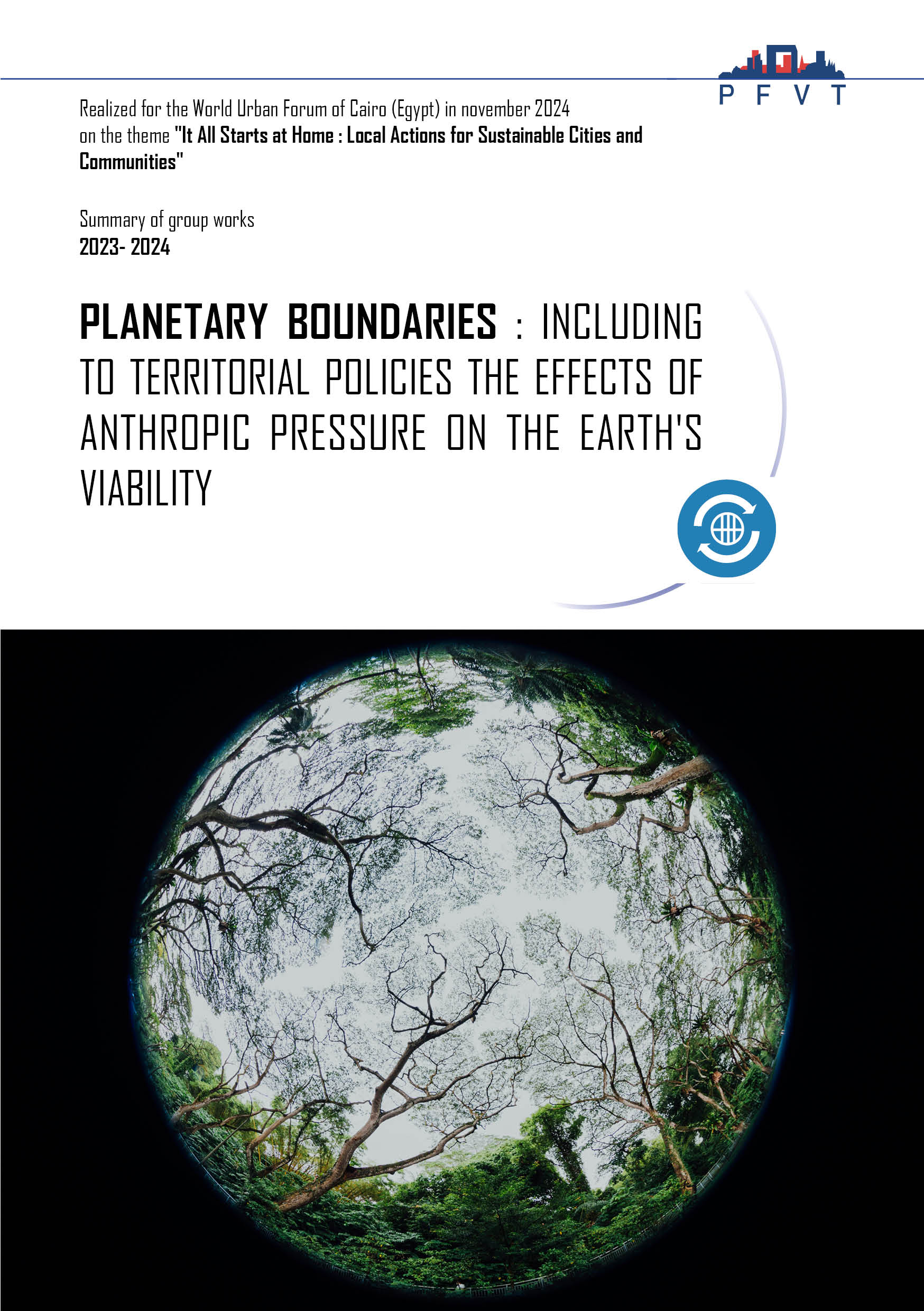Planetary boundaries: Integrate the impact of anthropogenic pressures on terrestrial viability into territorial policies

It is necessary to go beyond the idea that there are no limits to development and that climate change is the only parameter to take into account while there are eight other limits which condition the habitability of the Earth. . This systemic vision allows the putting into perspective of essential social needs, or “social floor”, and the planetary limits, or “environmental ceiling”, between which lies the safe and just space for humanity. Planetary boundaries are given on nine natural cycles: climate change (SDG 13), biodiversity erosion, disruption of the freshwater cycle, disruption of phosphorus and nitrogen cycles, erosion of the ozone layer, the reduction in plant cover, the increase in particles suspended in the air, the introduction of new entities into the environment and the acidification of the oceans. In 2022, new scientific data revealed that 6 of these 9 planetary boundaries have already been crossed. The question then arises: What limits and redirections of our activities to guarantee essential needs in the North and South and the habitability of our planet for all generations and on the basis of territorial cooperation? The group’s desire is to focus on the issue of sobriety and differentiated responsibility with regard to the depletion of natural resources between developed and developing countries, on access to essential services for all. as well as on the particular case of water resources.


